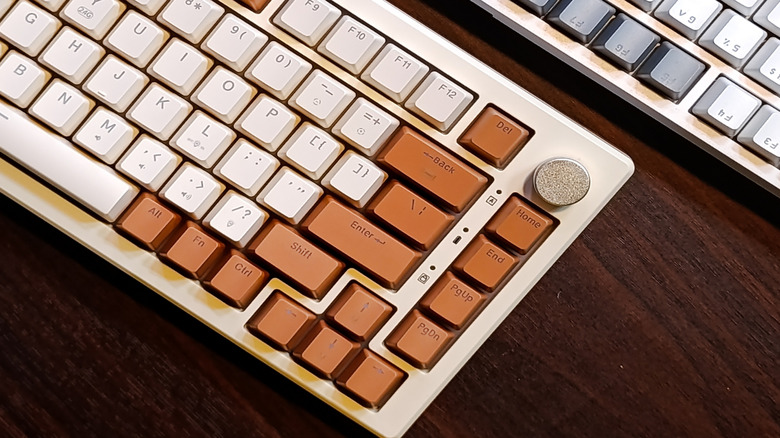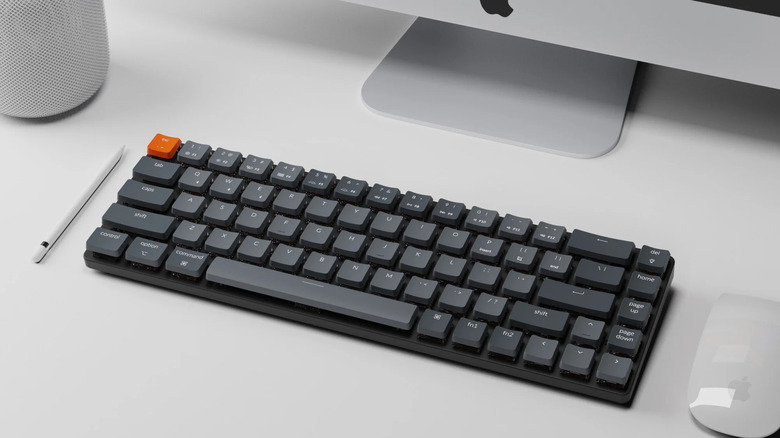65% Vs. 75% Keyboard: What Is The Difference Between These Two Sizes?
When setting up your workstation — whether at home or in the office — one of the things you're probably most particular about is your keyboard, and for good reason. It can be a bit of a space hog, so its size will largely dictate how much you can fit into your desk. That's why before even deciding on what other extra peripherals like speakers, lighting, and desk organizers to get, it's best to pick out a keyboard first.
There are multiple keyboard sizes out there for every need. If you typically work with numerical data and calculations, the full-size long keyboard with 104 keys is ideal for you. If you need something more compact but doesn't sacrifice functionality, then you're better off with the 87% keyboard. But if all you're after is minimalism and portability, the smallest 60% keyboard sounds more like your style.
Besides these three major keyboard sizes, though, you'll also frequently encounter two other options: 65% and 75%. These keyboards are very close in percentage, so it's easy to mistake one for the other. But upon closer inspection, they actually have distinct features. Let's go over how the 65% keyboard differs from the 75% layout.
65% versus 75% keyboard size
Both the 65% and 75% keyboards are considered compact and space-saving. But there's one thing that clearly differentiates the two: their set of available keys. On the 65% keyboard, you usually only get 68. It still has all four arrow keys unlike the smaller 60% layout, but the navigation buttons are reduced to about three or four depending on the brand. Some mechanical keyboard brands like Keychron and HyperX include Delete, Home, PgUp, and PgDn. Others like the Royal Kludge and Corsair don't have the Home button. To make the 65% keyboard even more compact, the function row and number pad have been removed completely too. They're now integrated into the number row at the very top.
Meanwhile, on the 75% layout, you'll typically find 84 keys. It's still considerably smaller than the full-size keyboard since it no longer features a number pad. However, it retains the entire function row, arrow keys, and a couple of the navigation buttons, such as Delete, PgUp, PgDown, Home, and End. Most 75% keyboards also come complete with a volume knob in the upper right corner.
With how they're designed, the 65% and 75% keyboards serve different purposes too. The smaller keyboard is best for casual typists who want a minimalist desk setup, on-the-go users who don't like lugging around long and bulky gear, and even gamers who need the desk space to use their mouse comfortably. The 75% layout, on the other hand, is suited for writers and people who mainly work with text and beginner programmers who need access to more shortcut keys.

